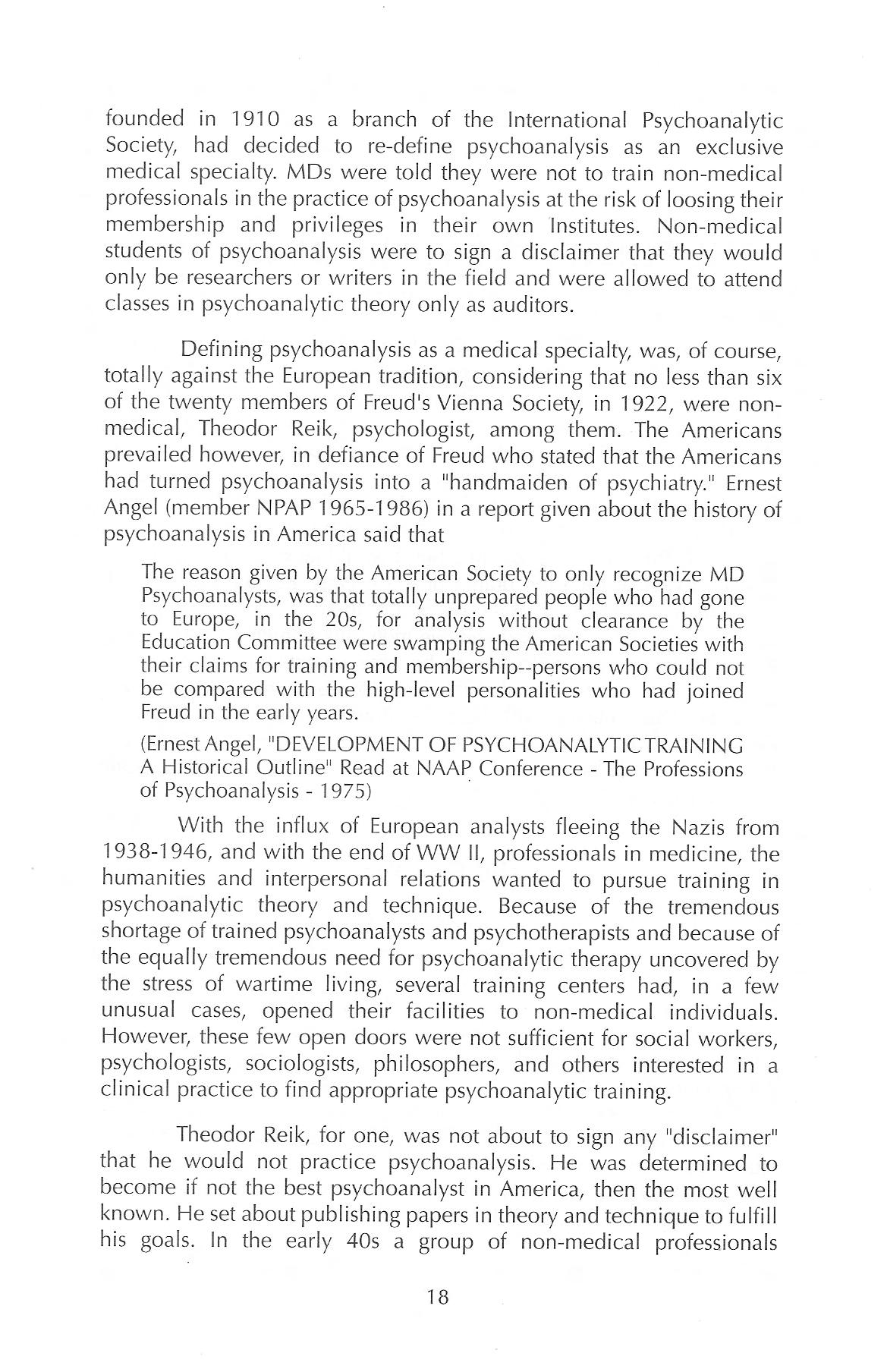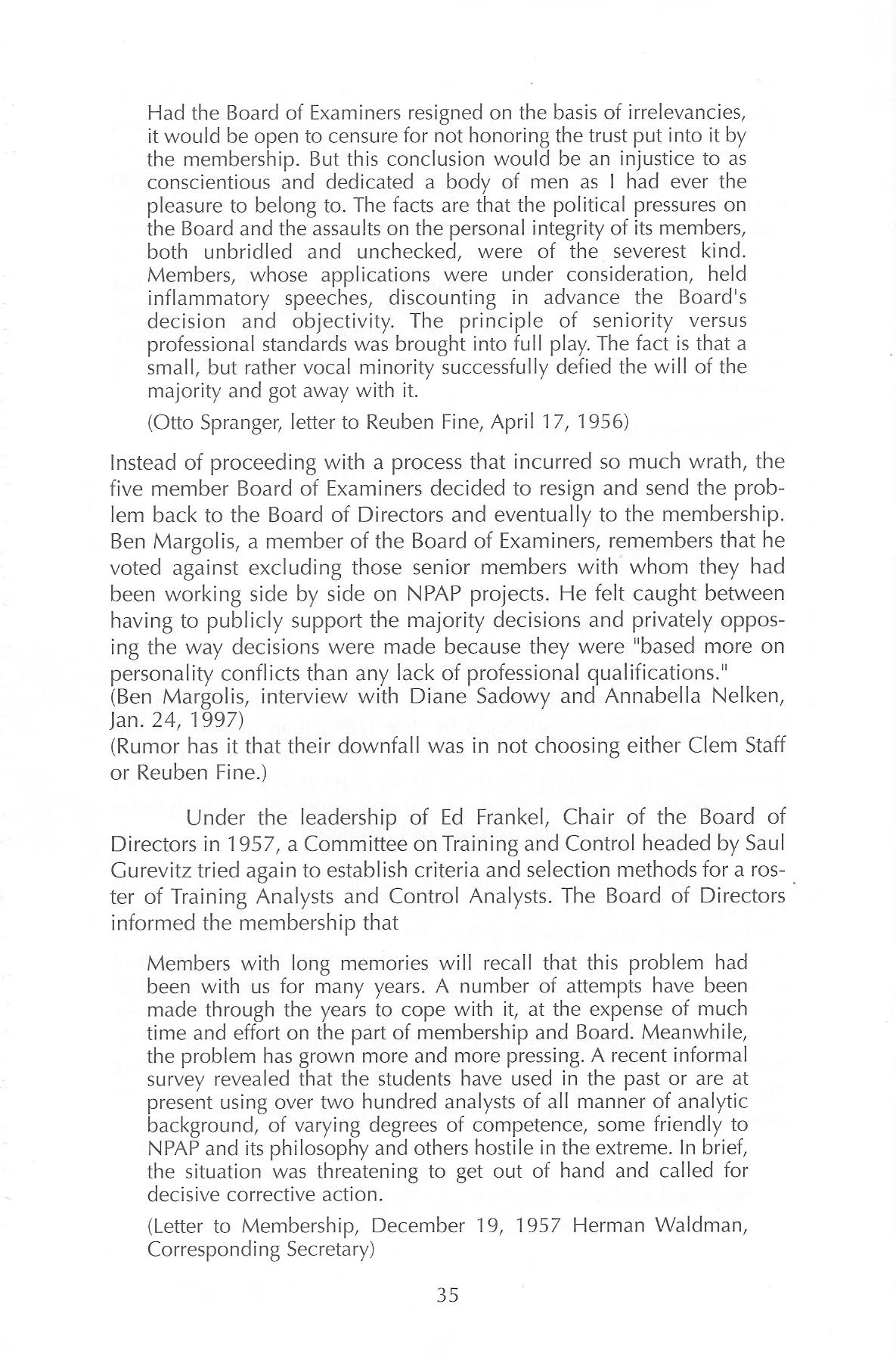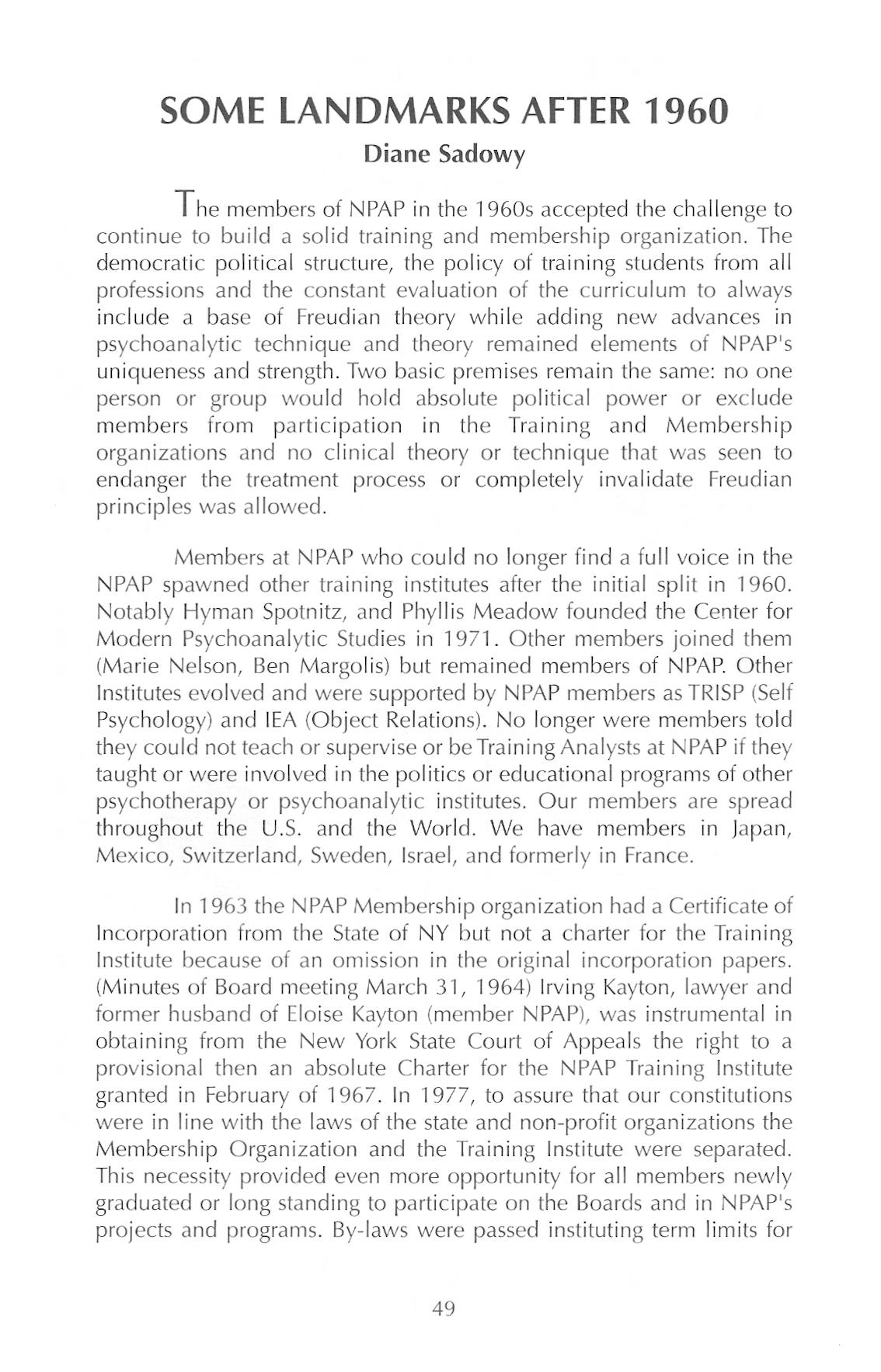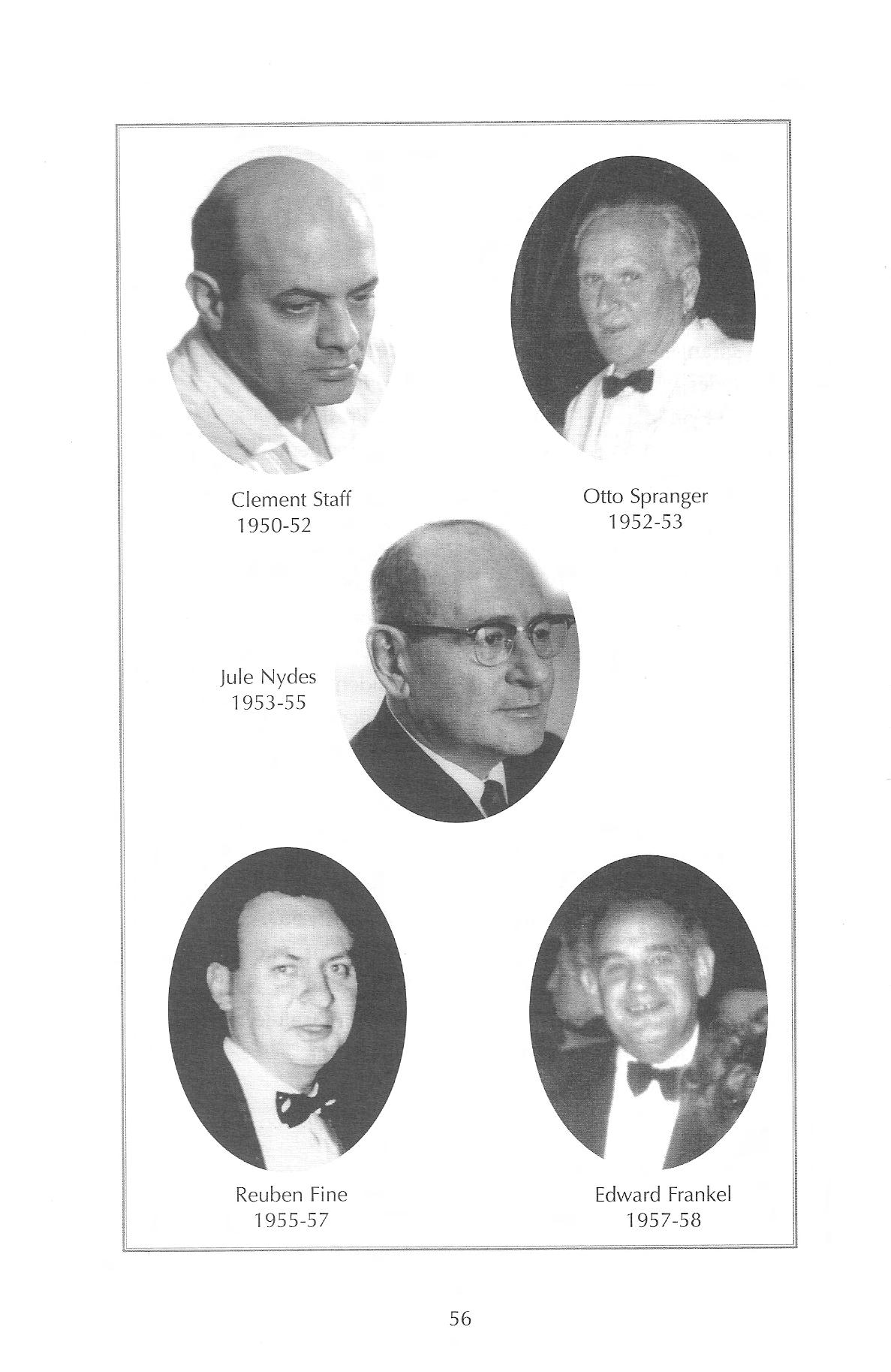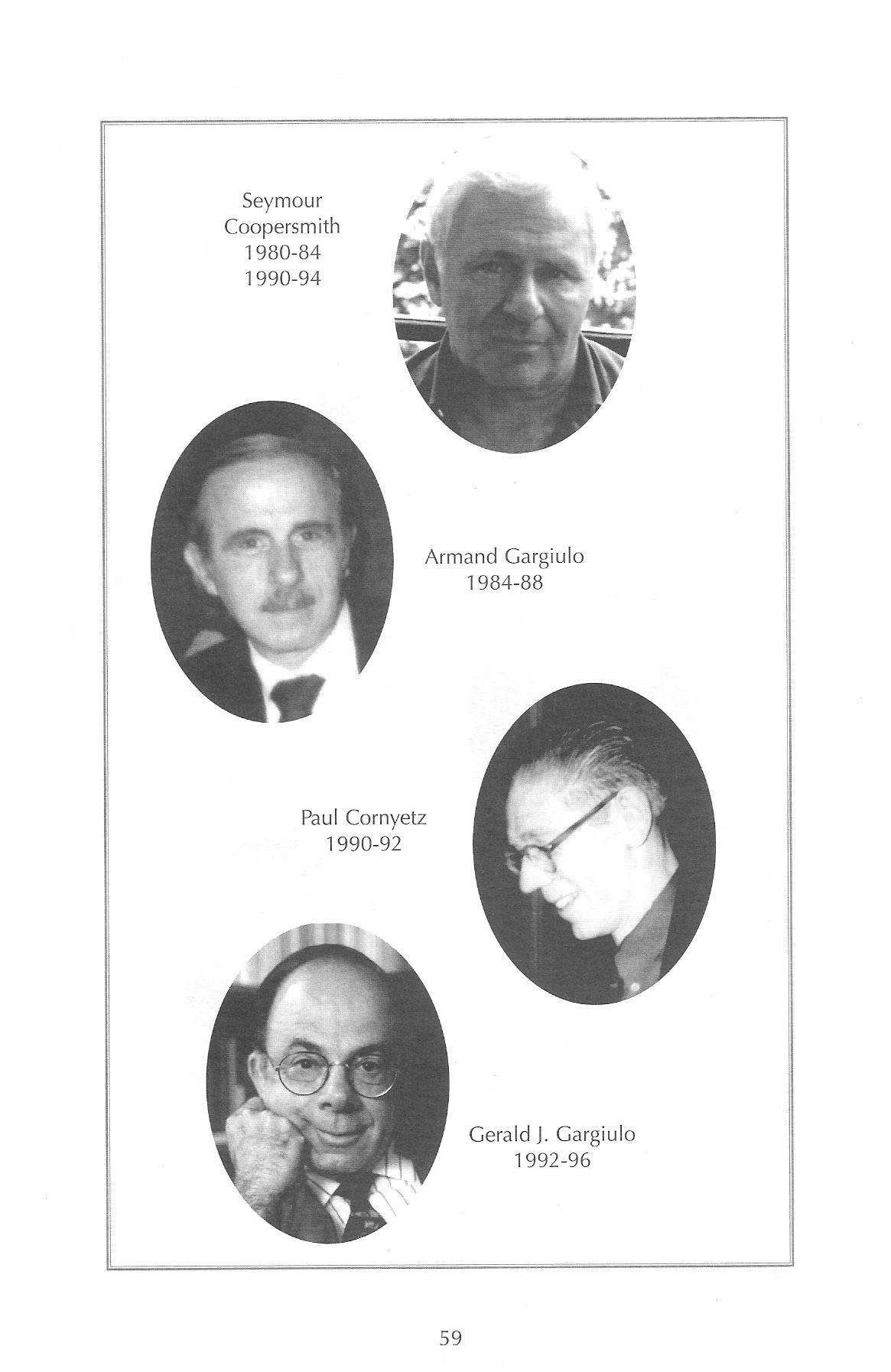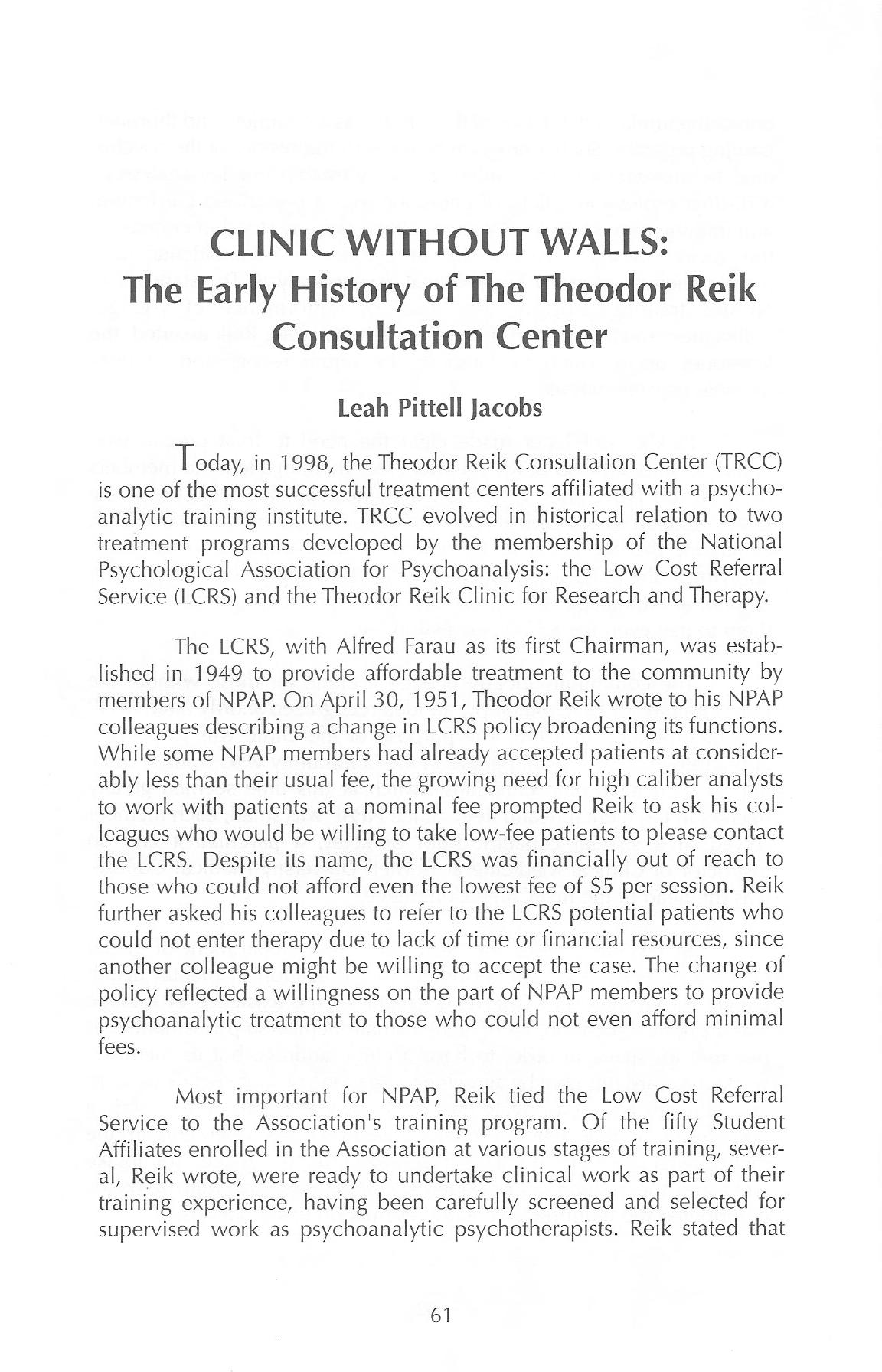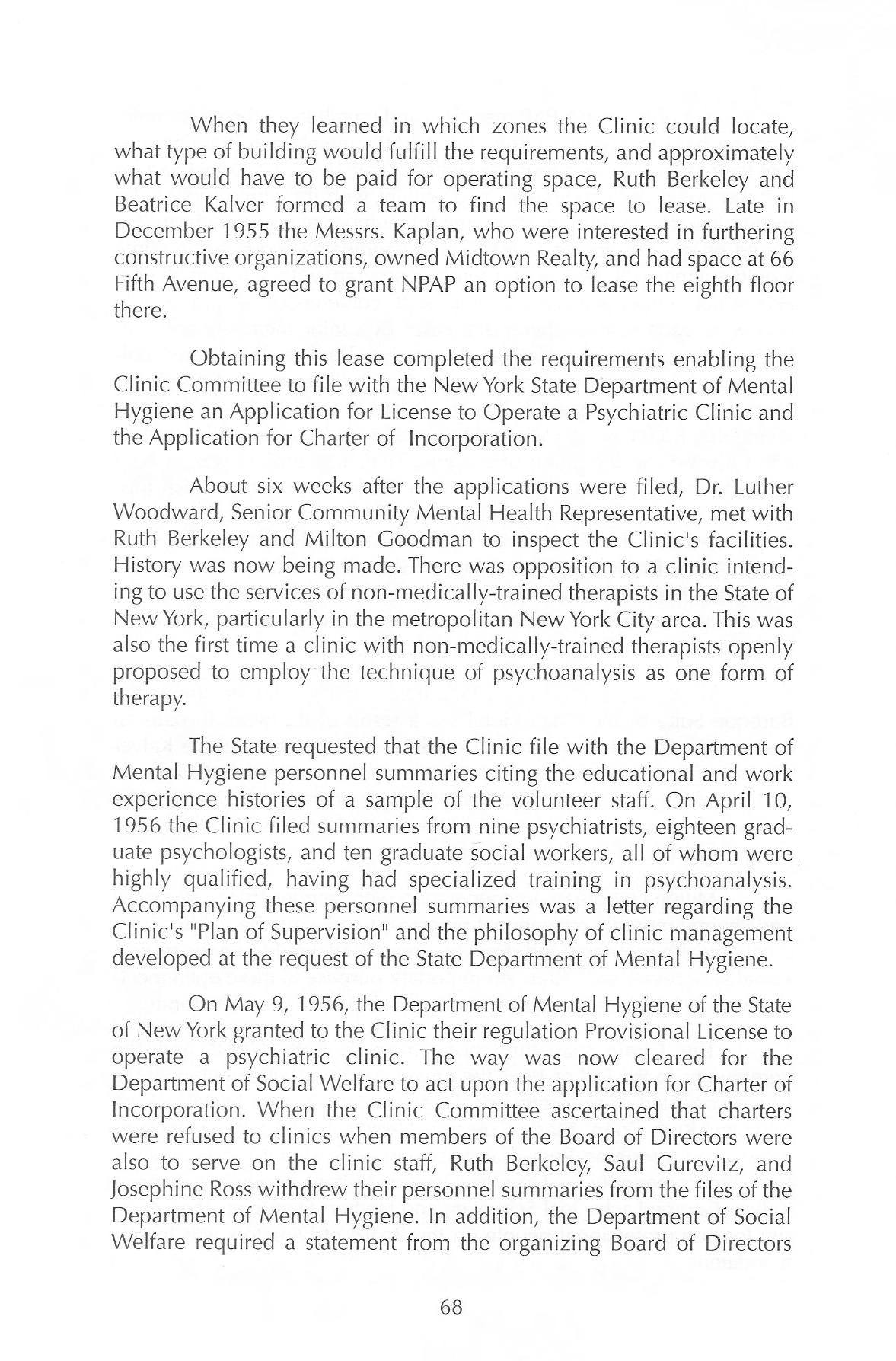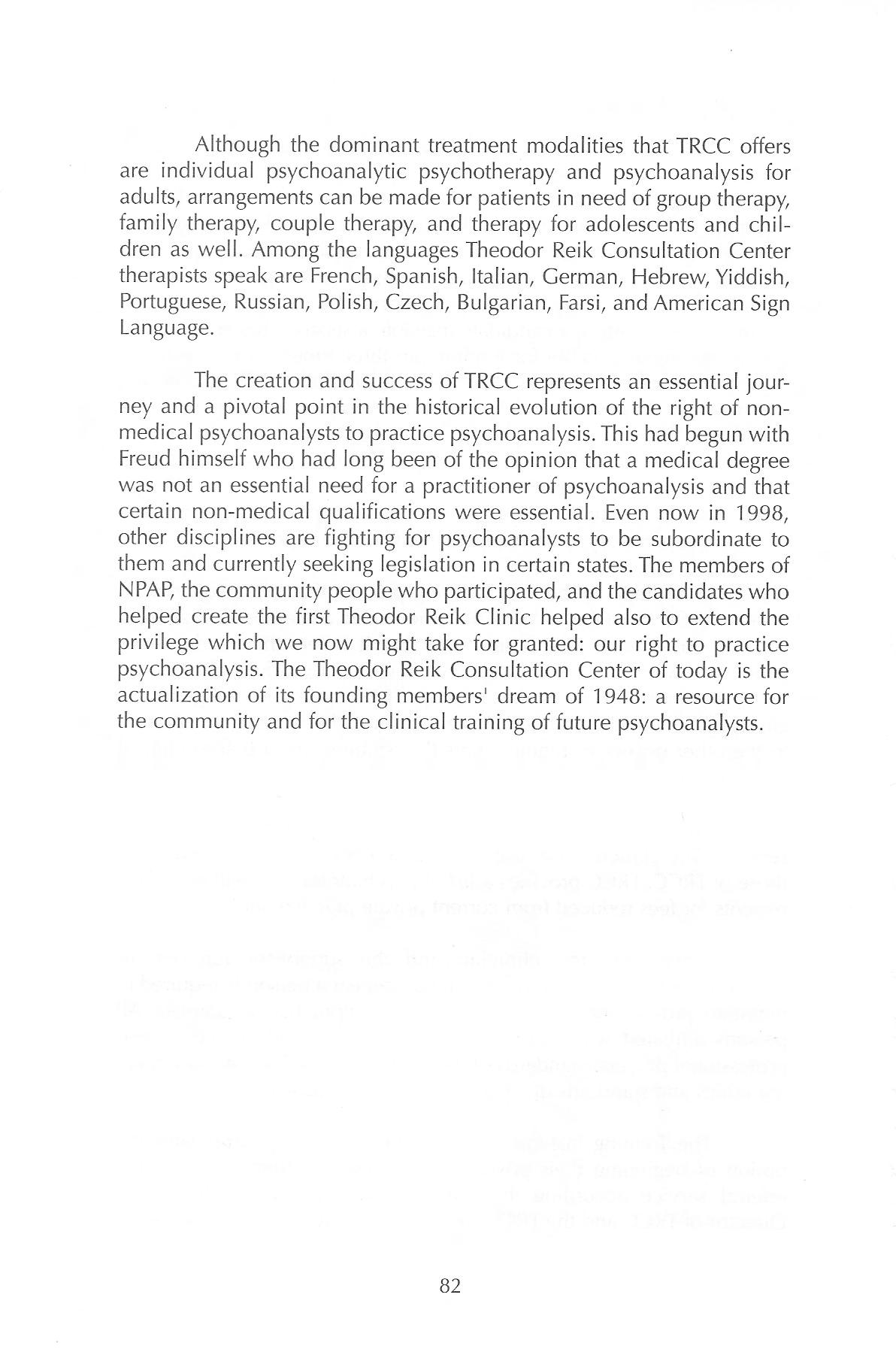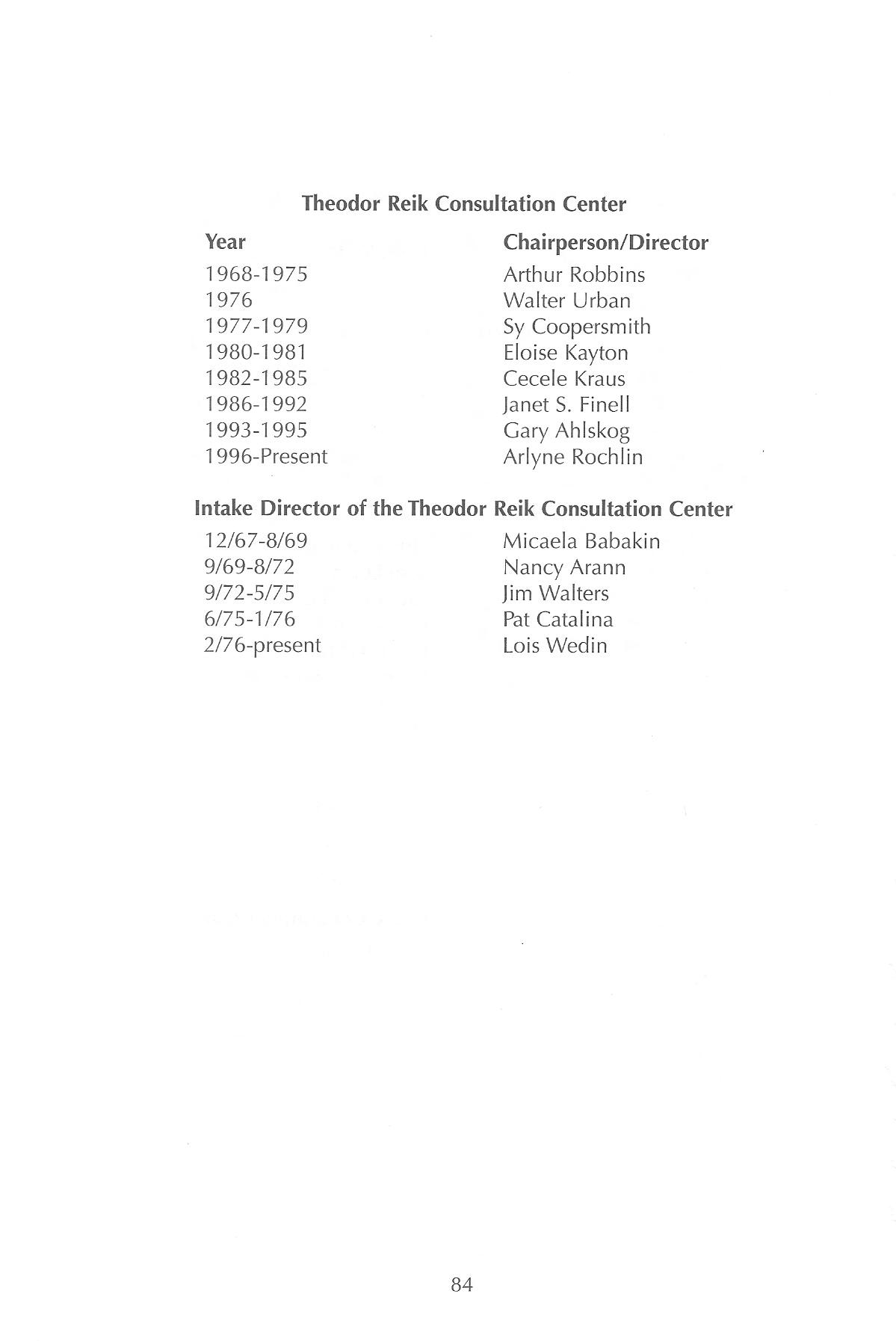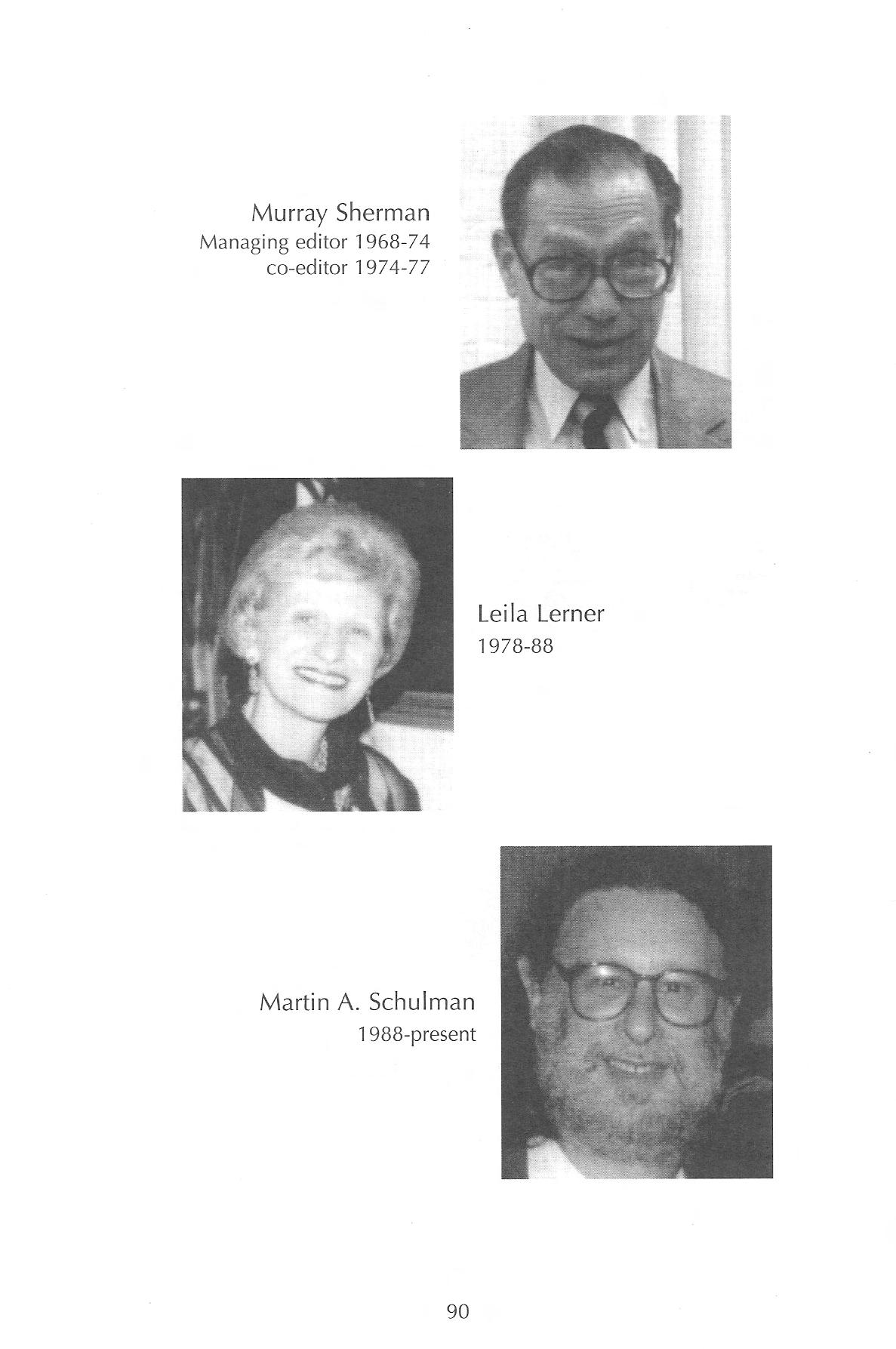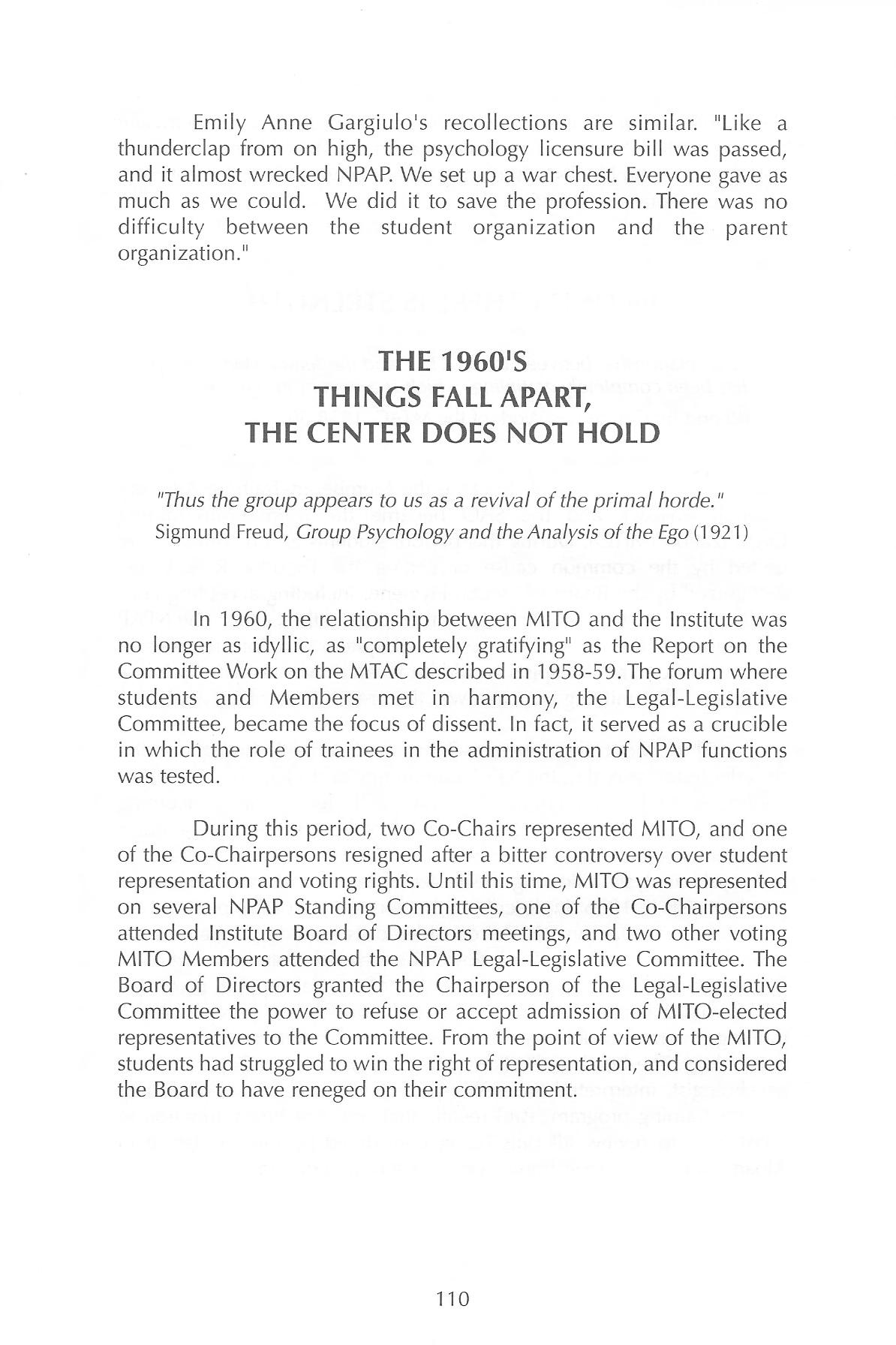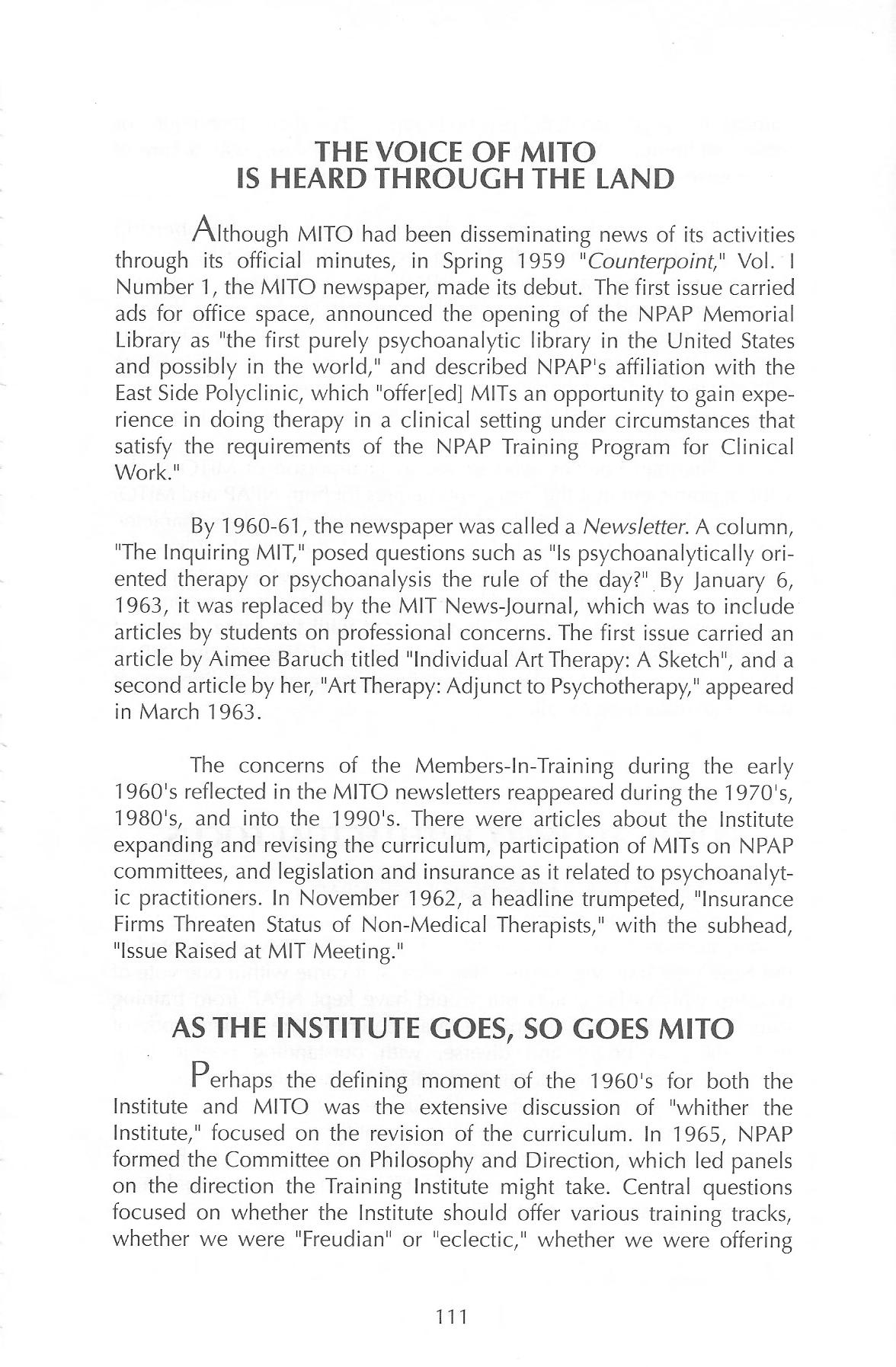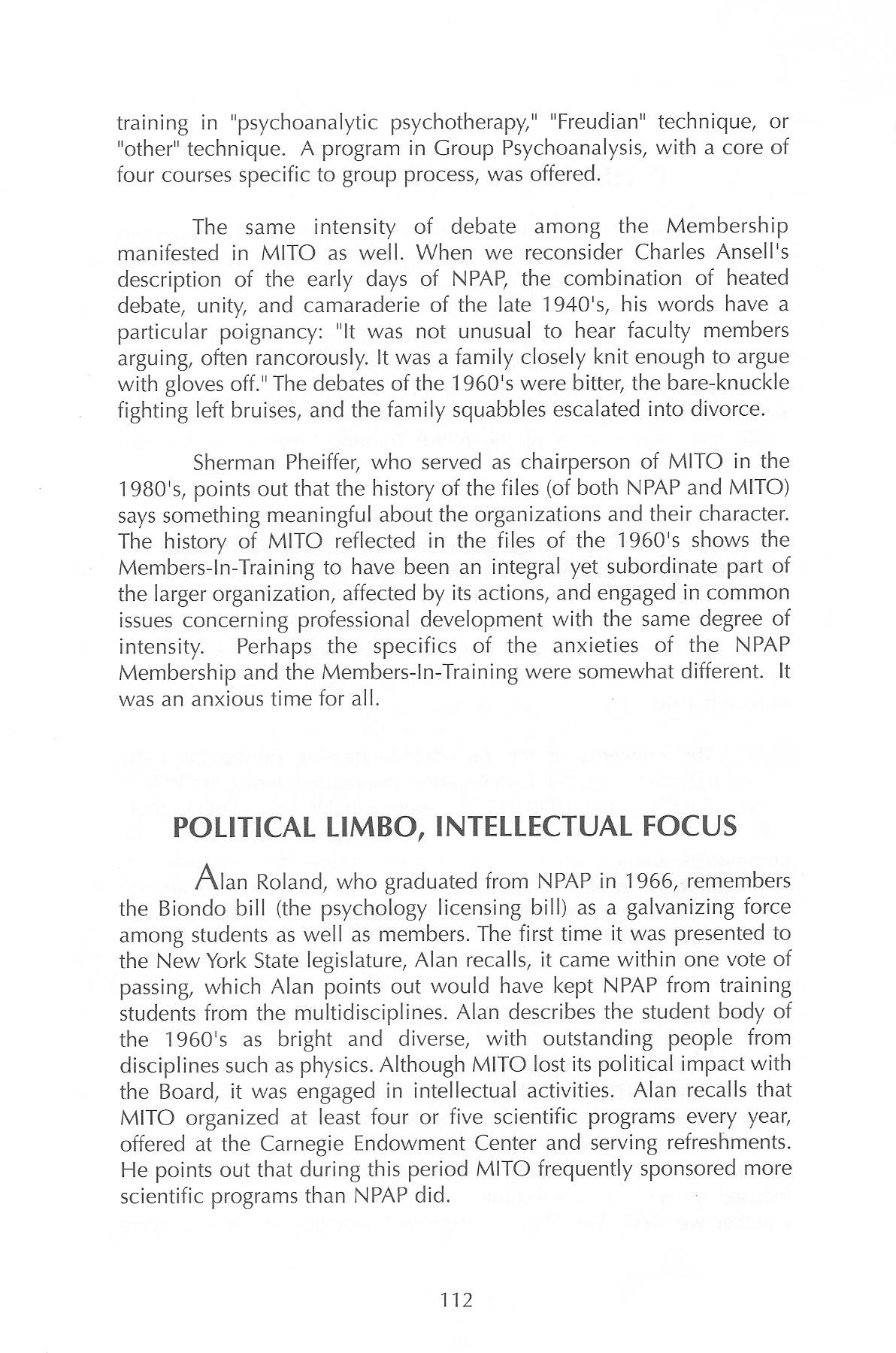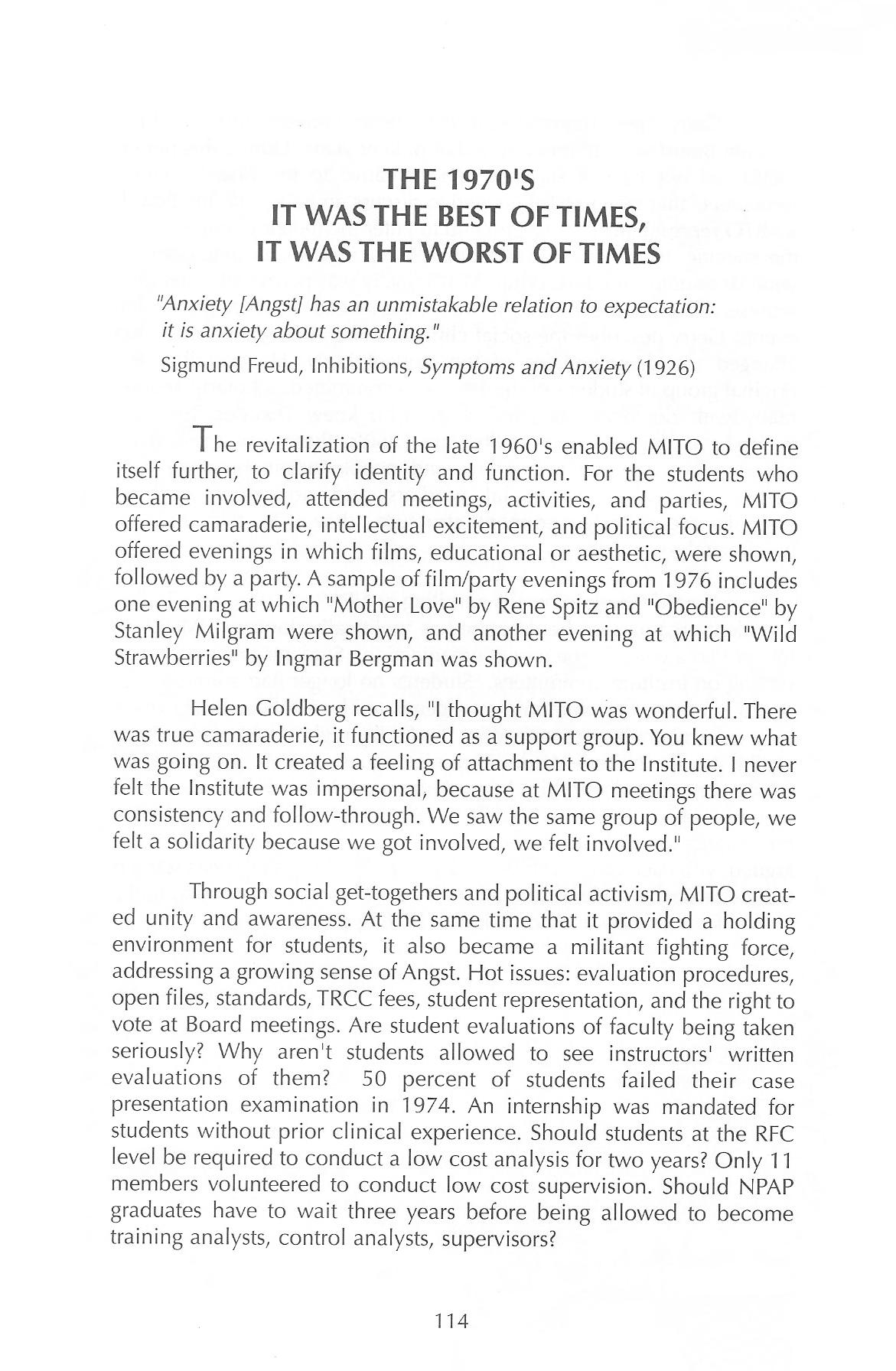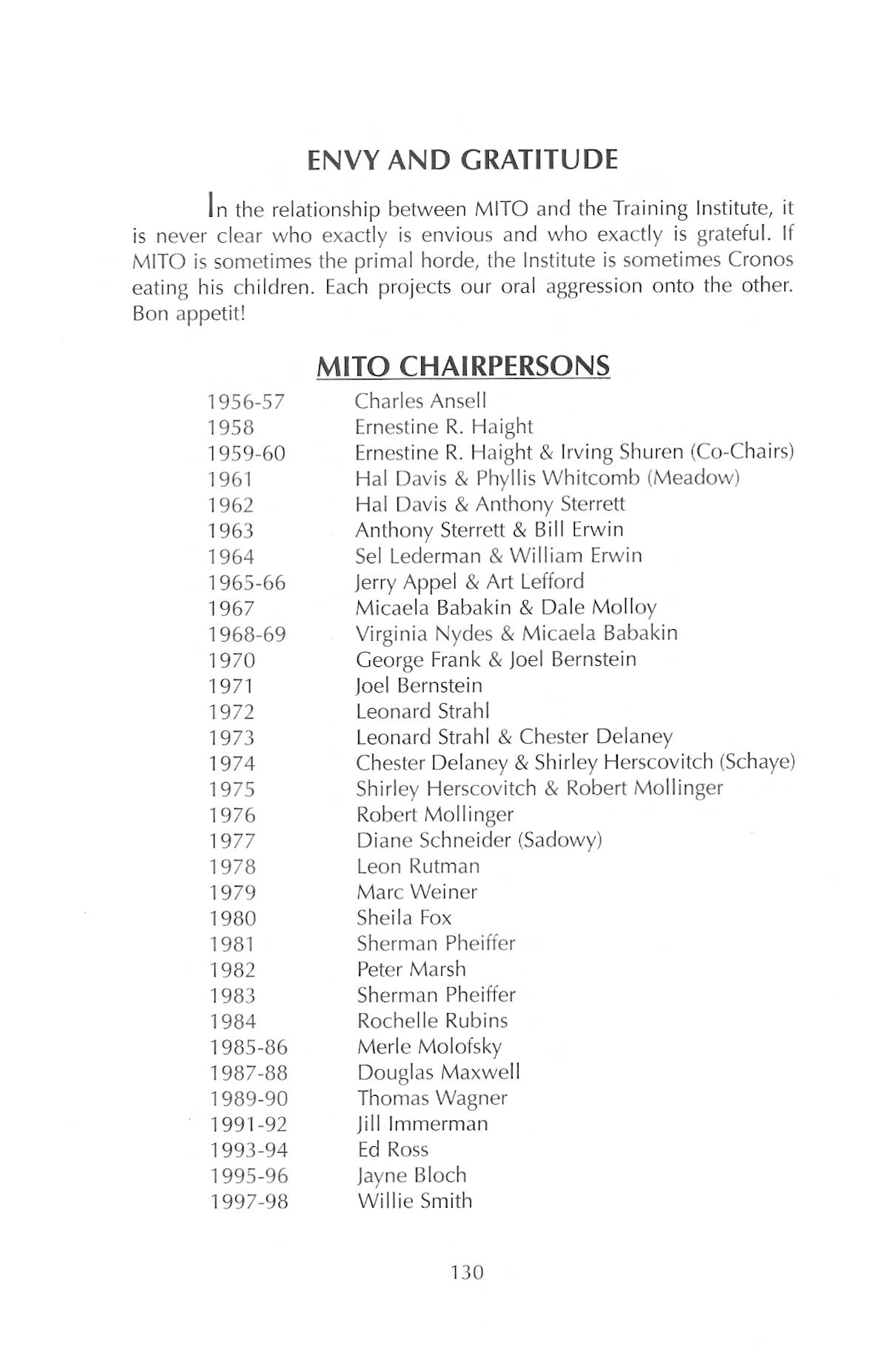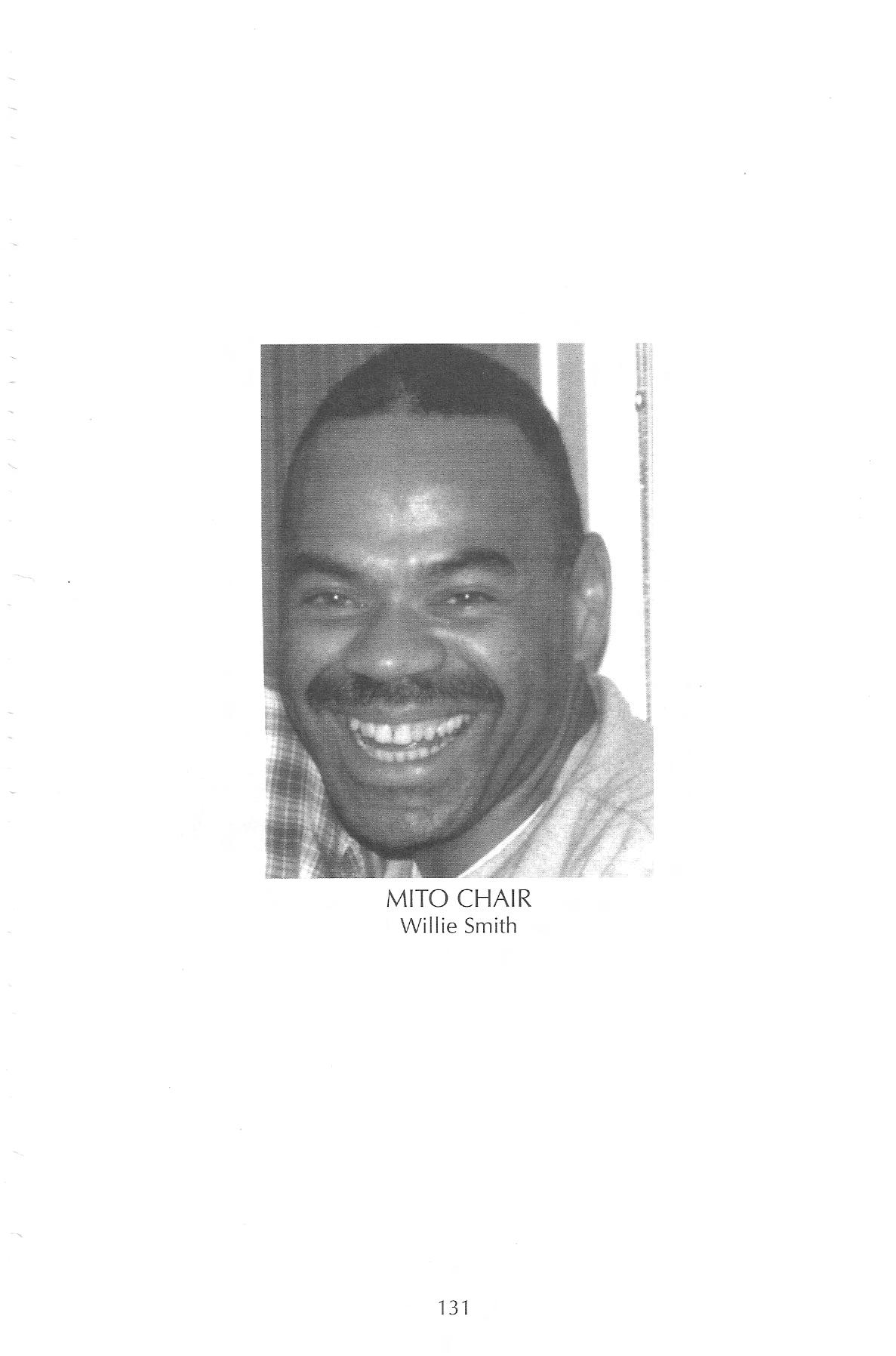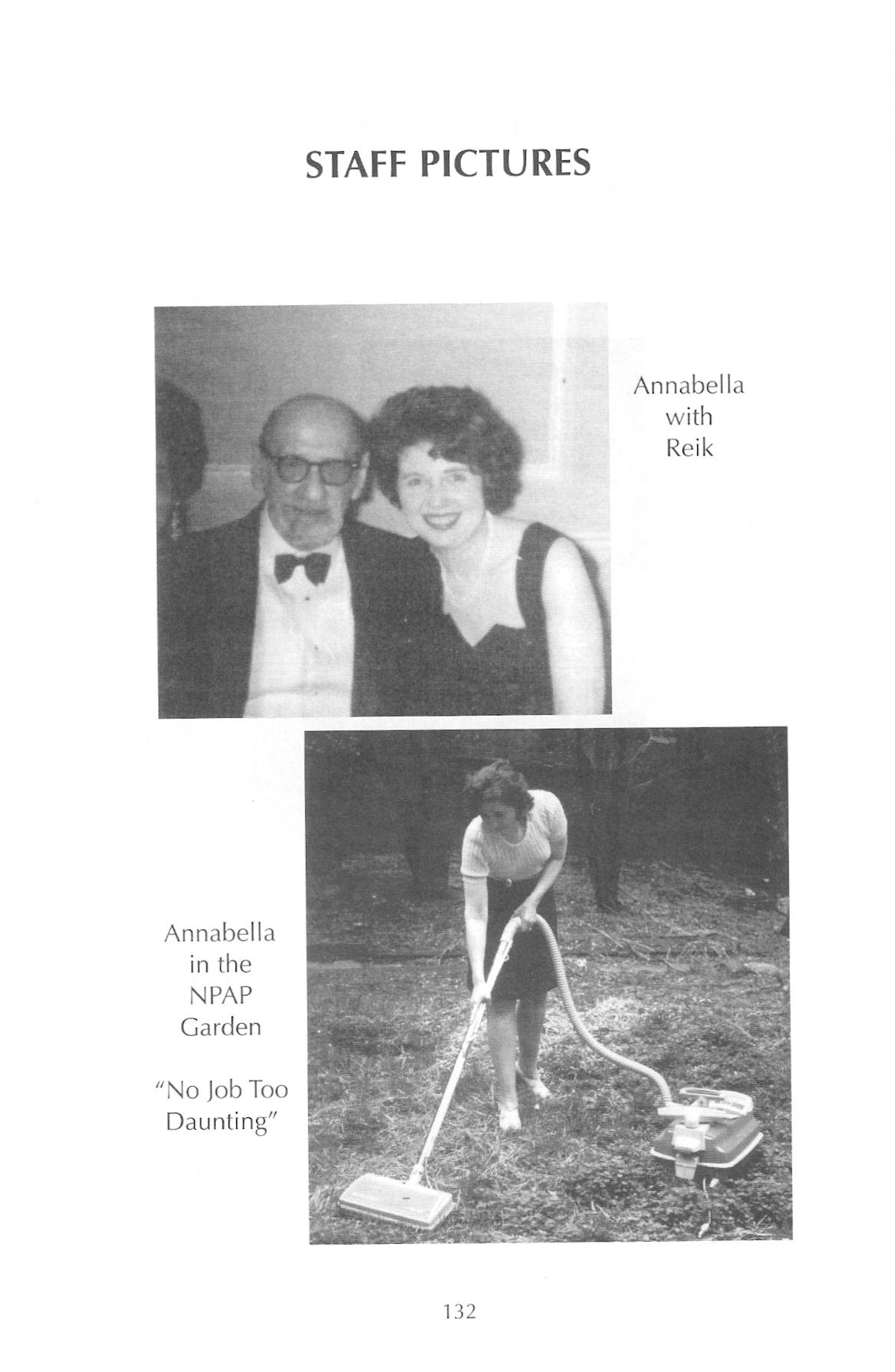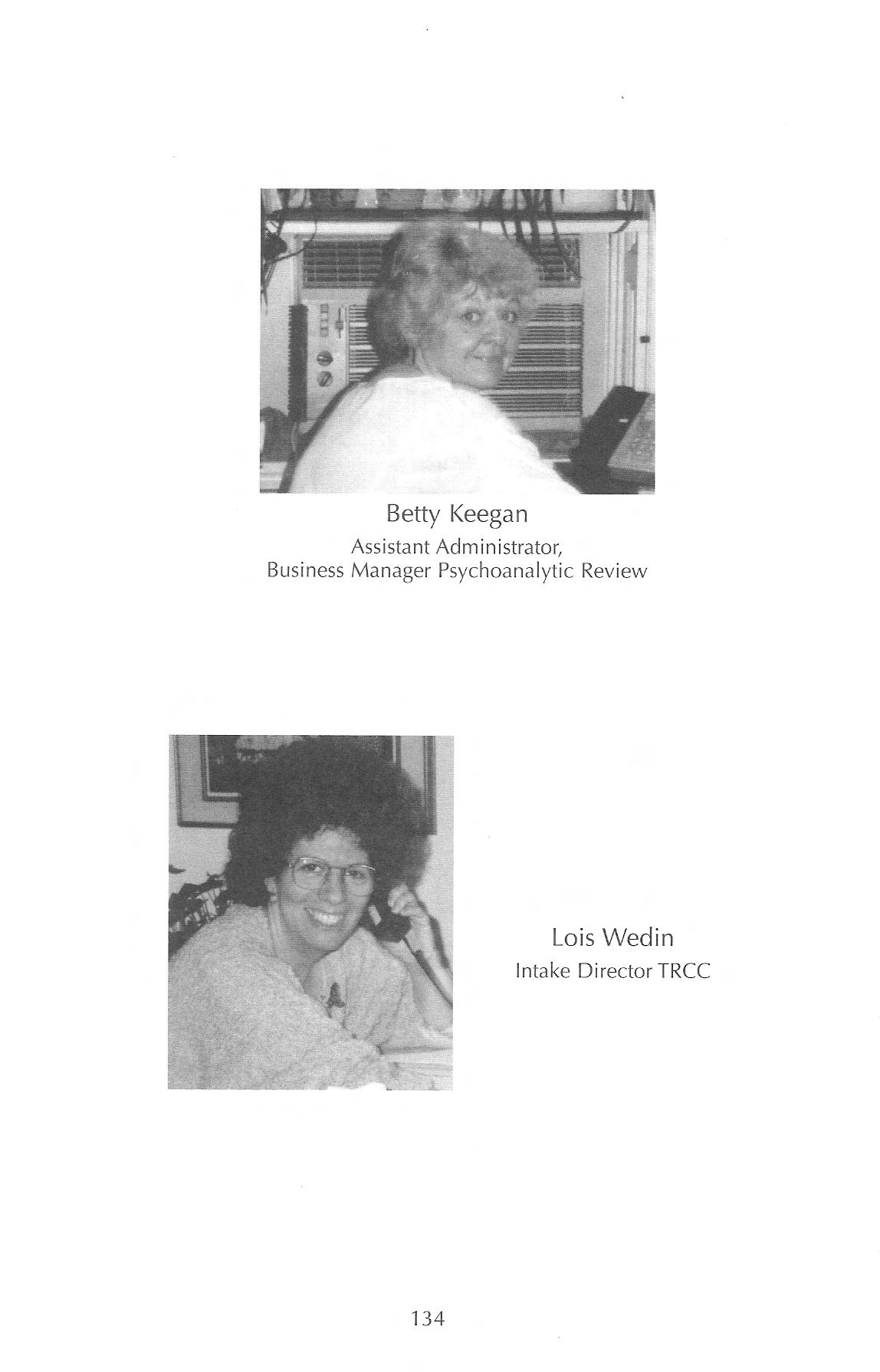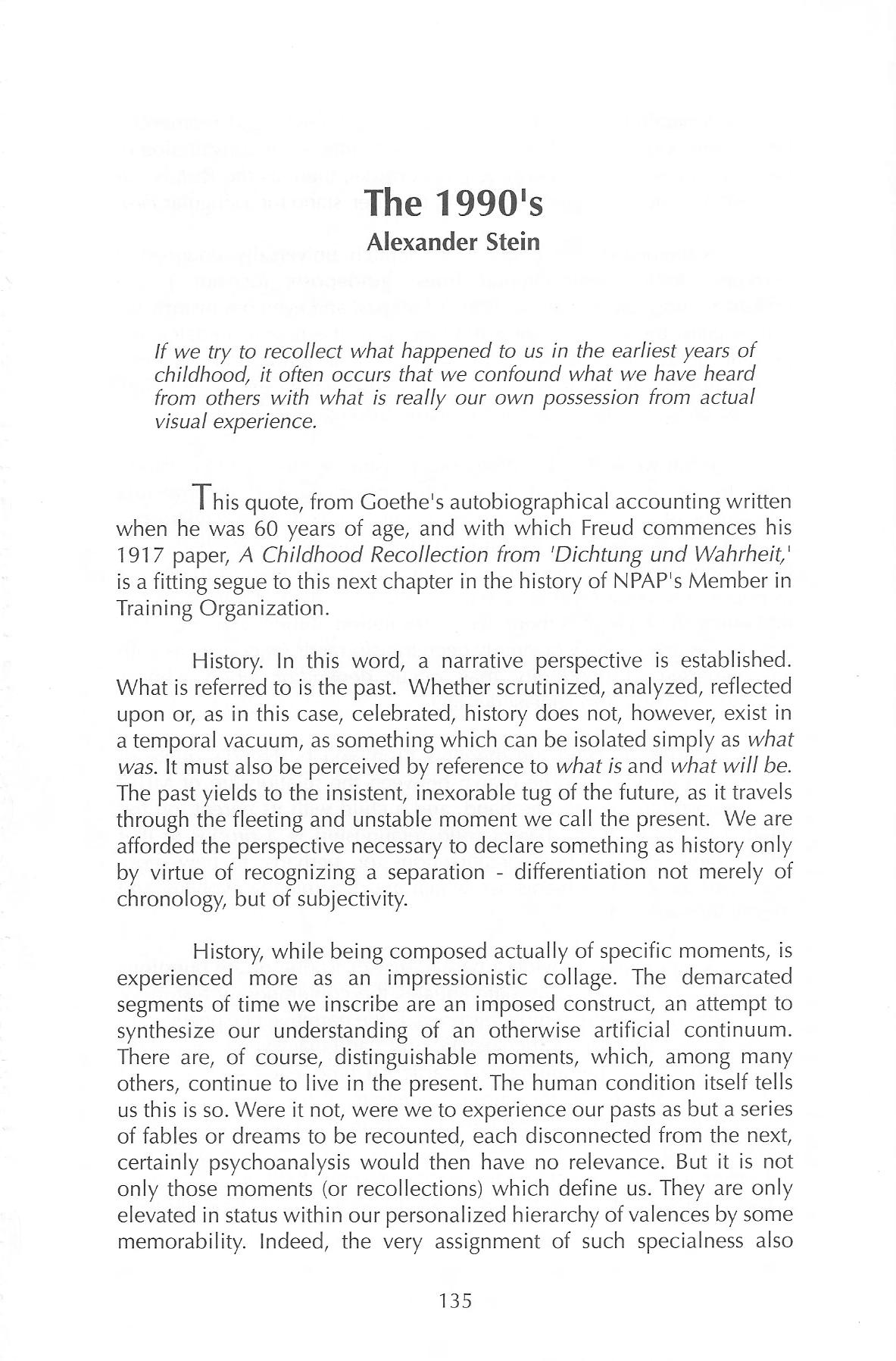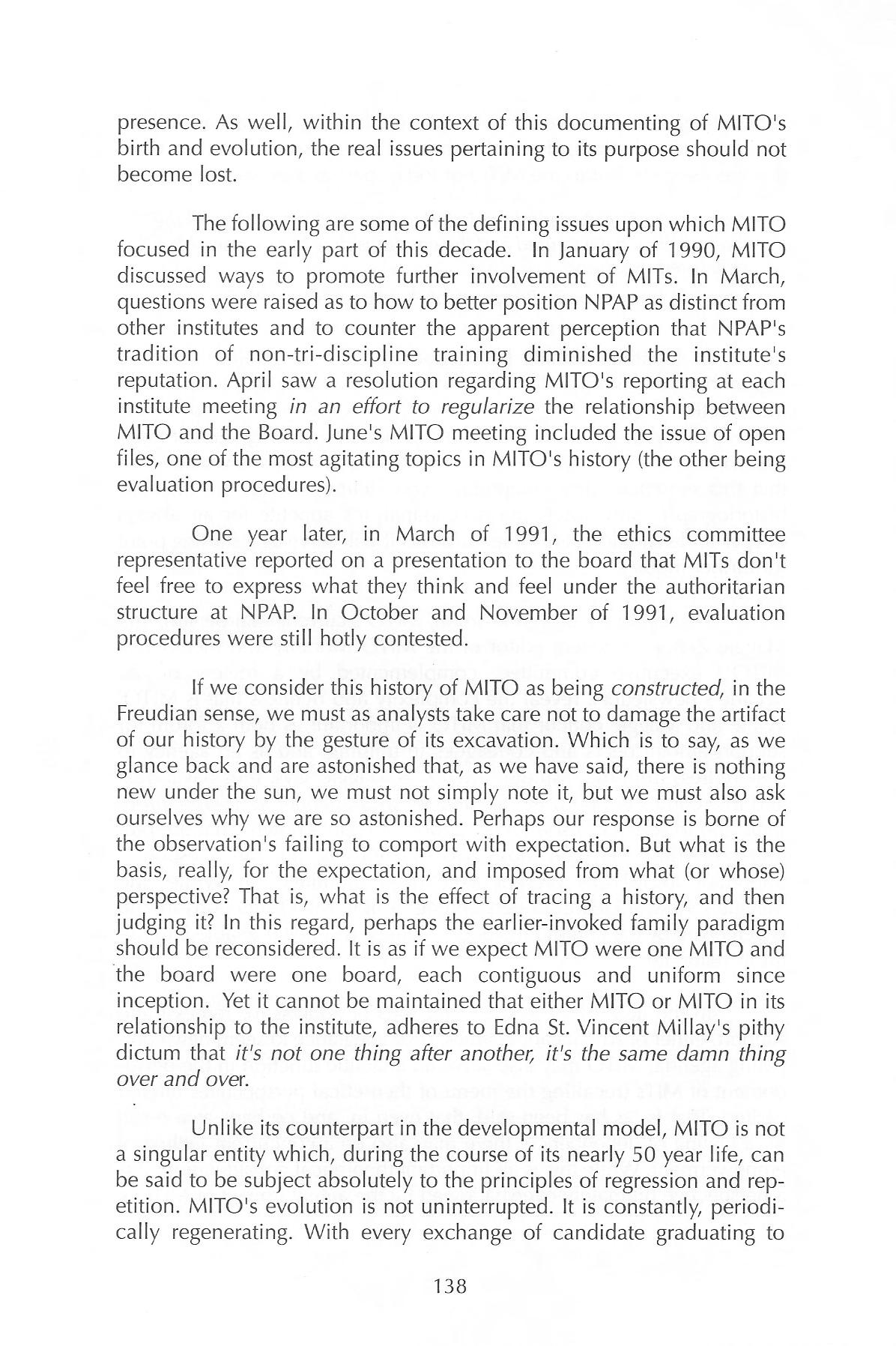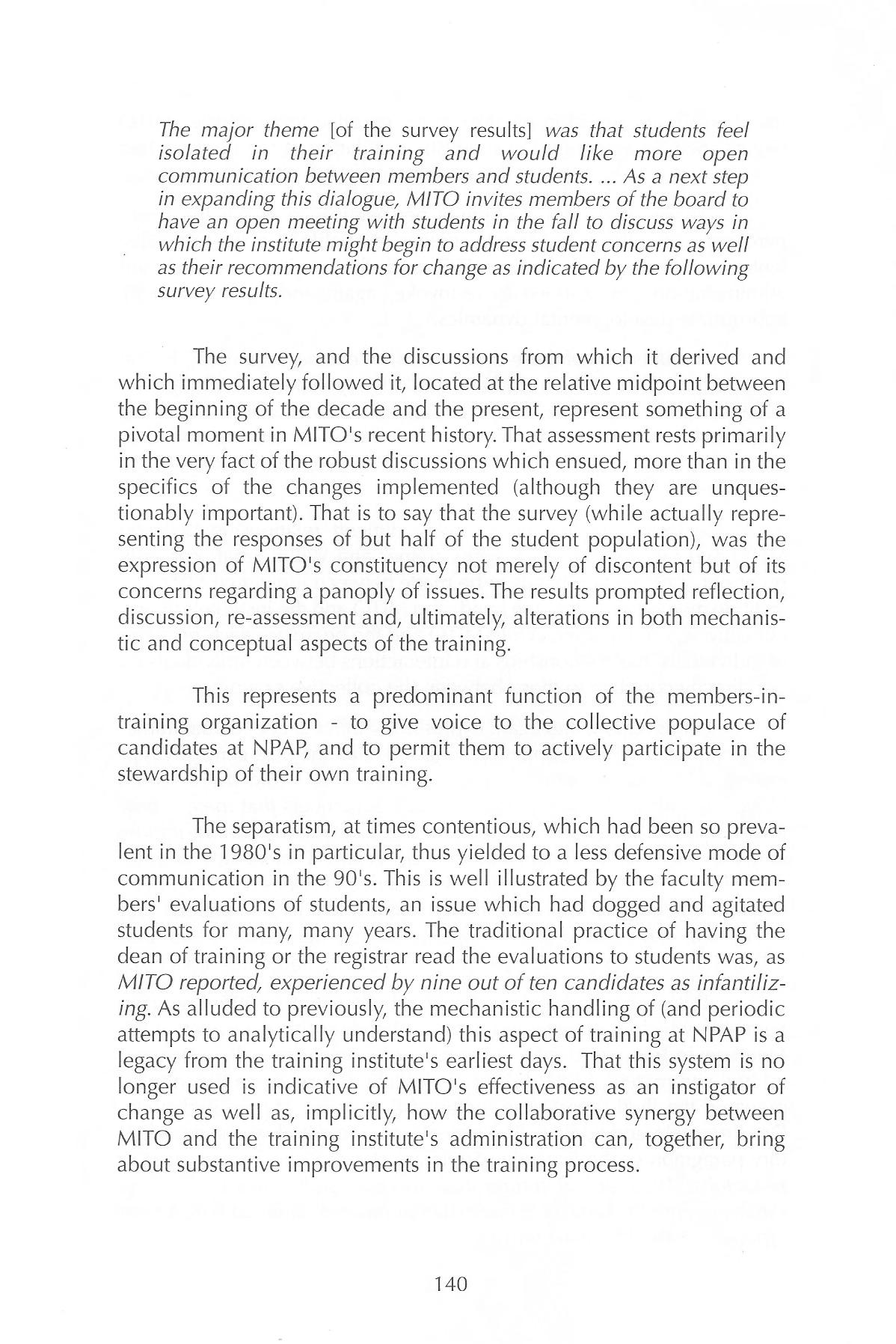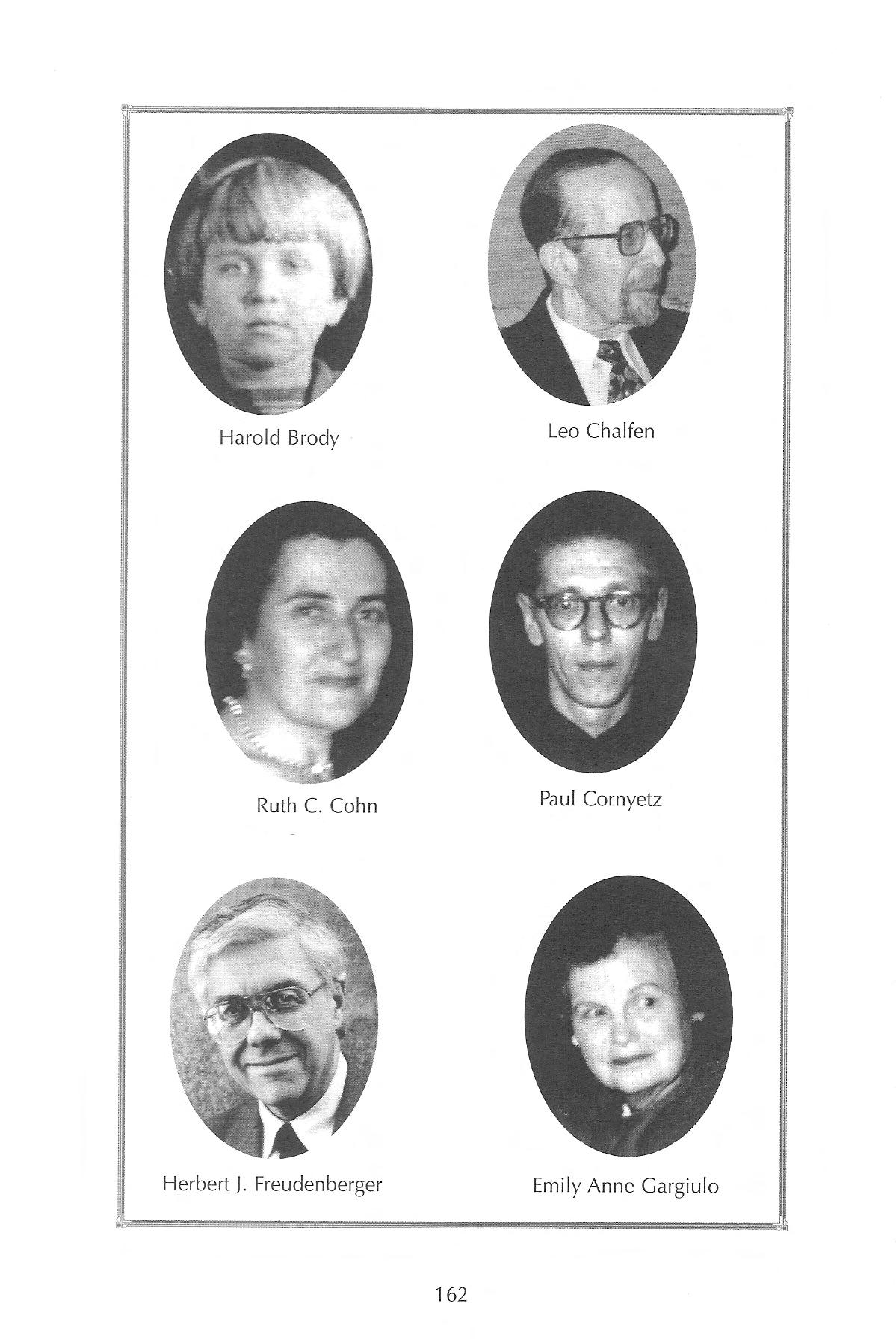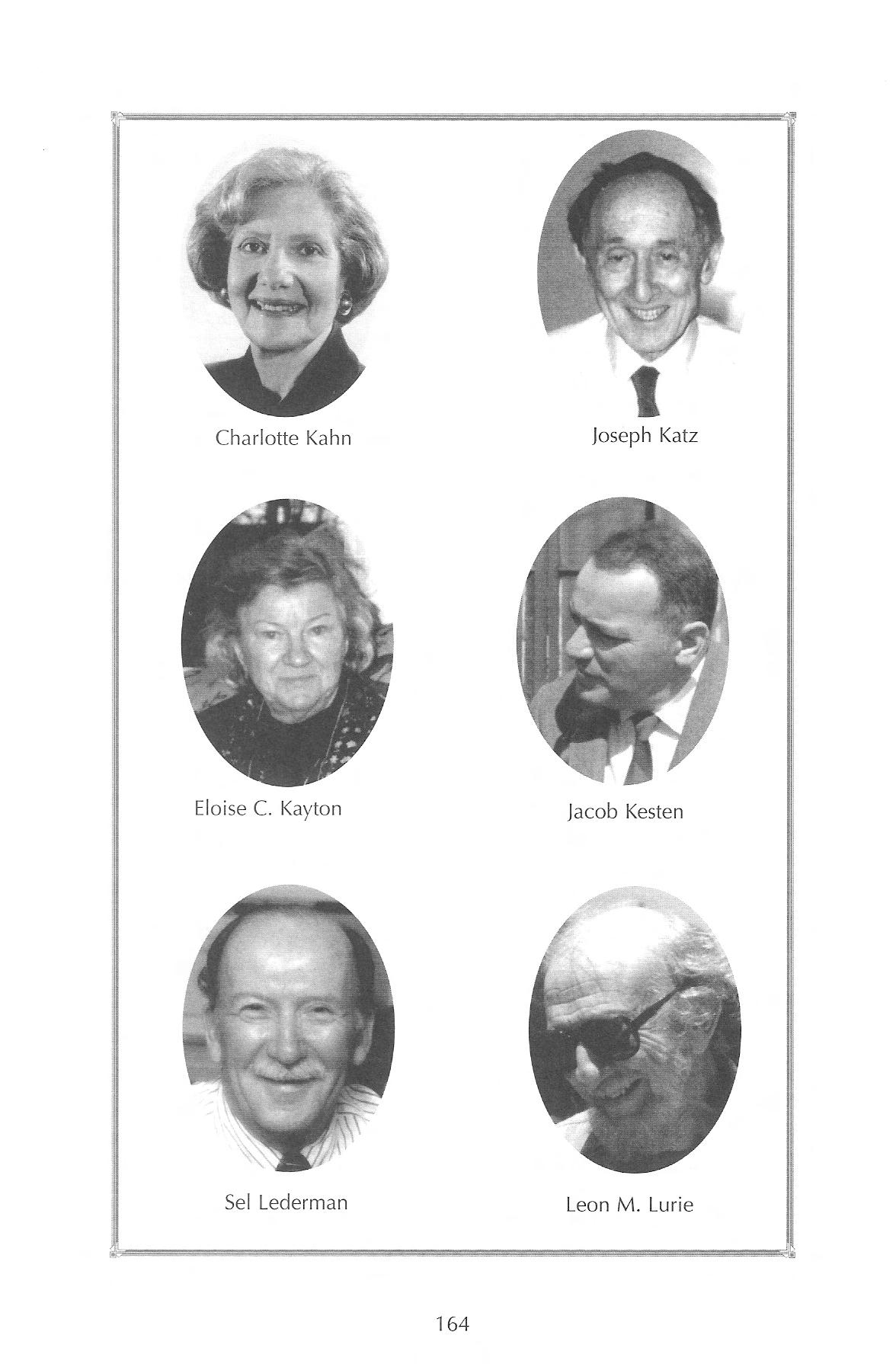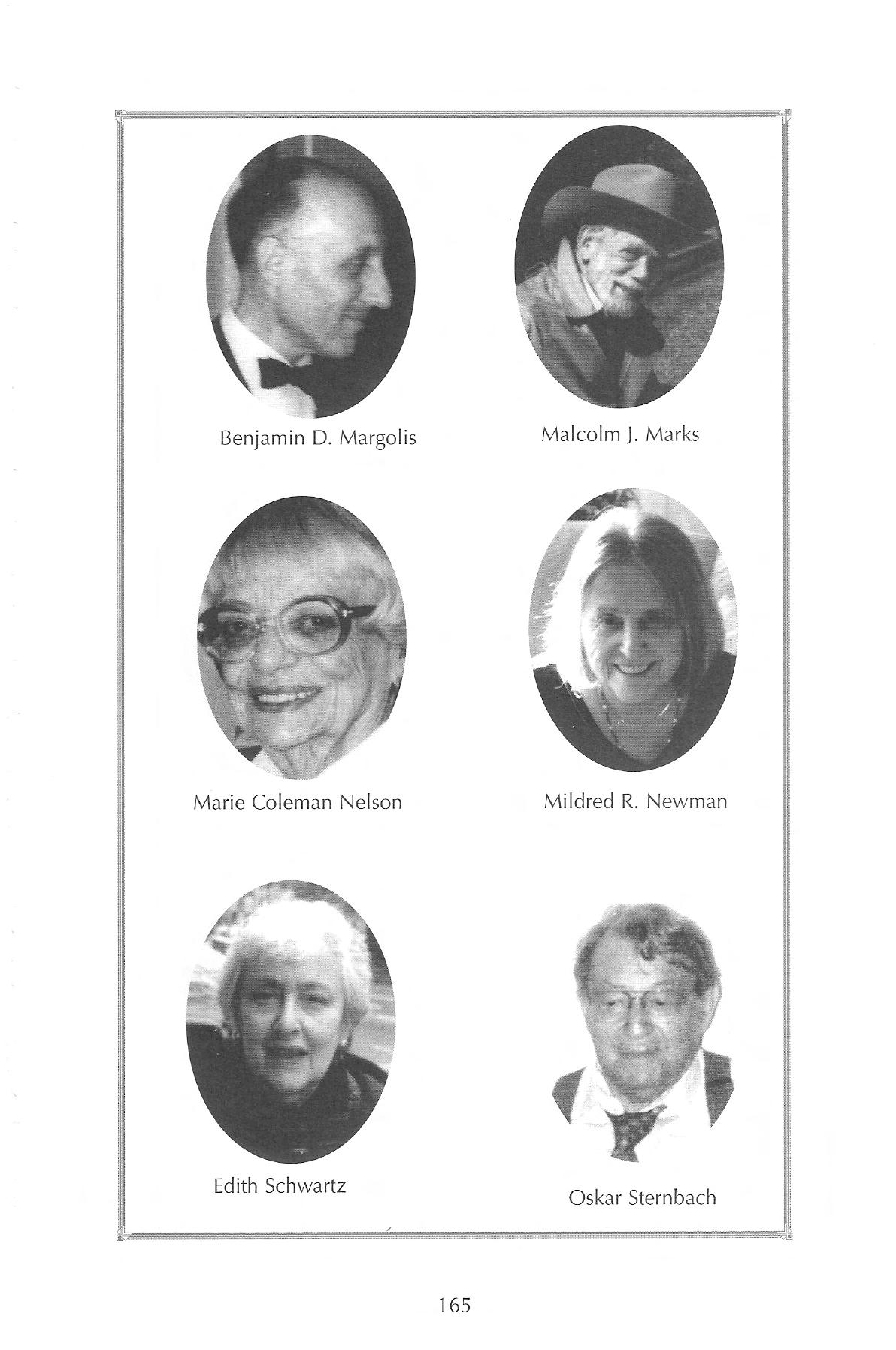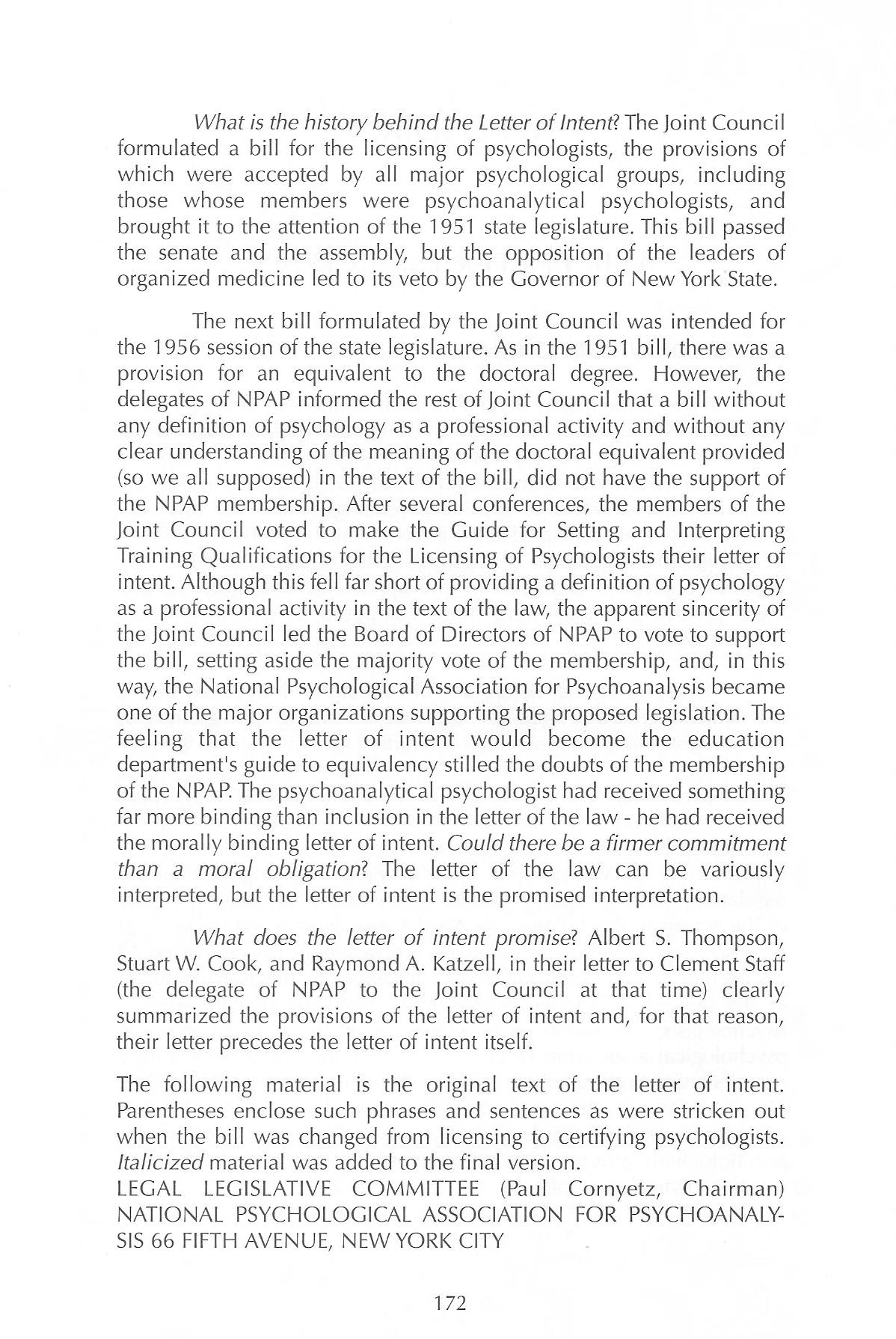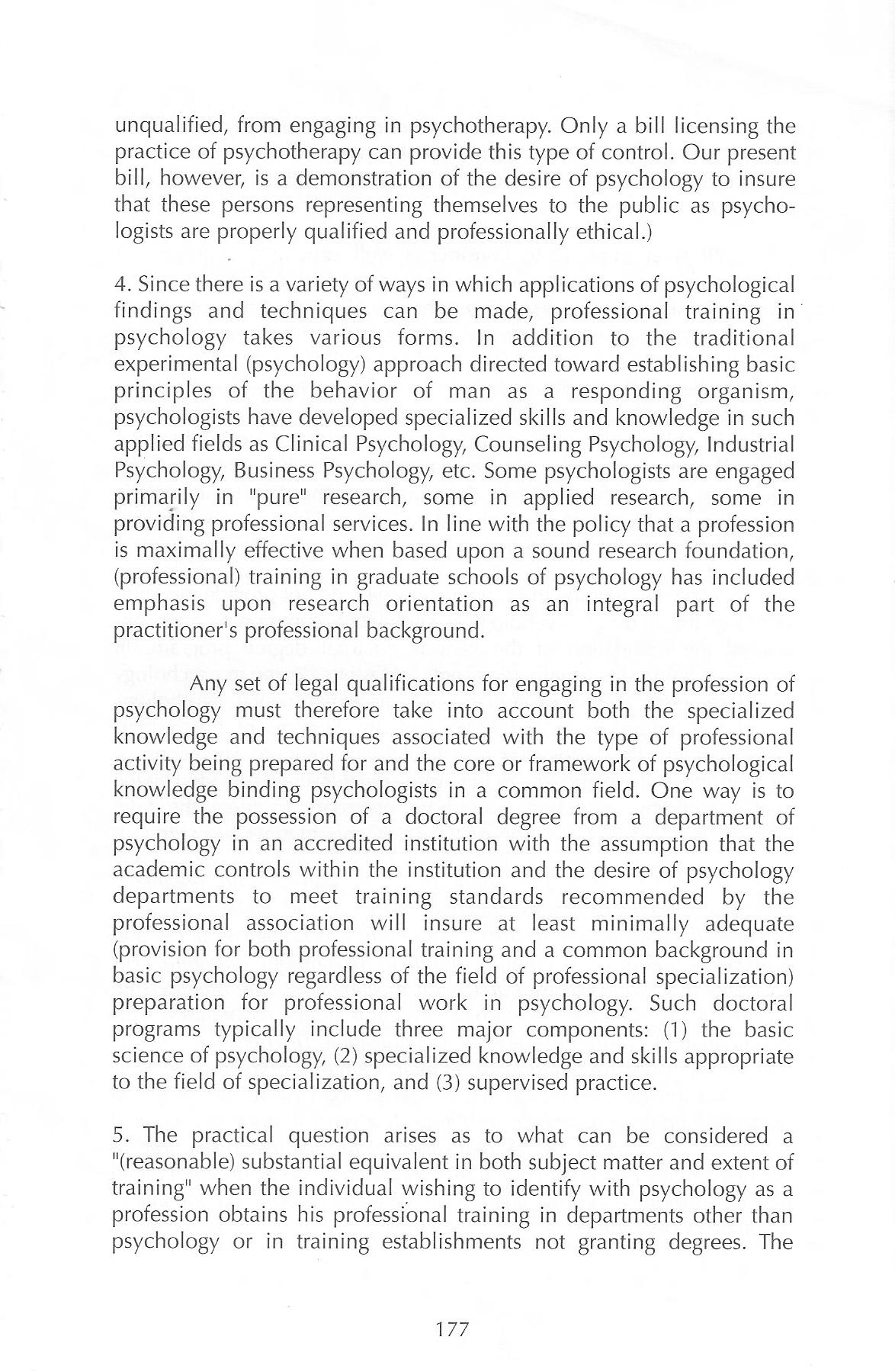



































Renderingahistoryof NPAPfromcorrespondence, interviews, minutes of Board meetings, official records, and remembrances of members is a process of selecting what interests us and what we think willhold thereader's attention, whiletrying tobeaccurate and faithful to what happened. We could relate only anecdotes, pictures, gossip, and reports of the major battles. This would present more of a romanticized past than a factual one. We could present the raw data and documents that resulted from all the political and organizational successes. This would be accurate butit would lack vitality. So we will attempt to relale both the drama of the events, and the policies and documents that resulted. Have no doubt, there is a drama to report, played out by dedicated and creative men and women who coalesced around a fervent determination to become competent and practicing psychoanalysts. There are also the facts to report that document our heritage. This chapter will describe how in the 1950s members dedicated their hearts and souls to establish NPAP's distinctive democratic political structure, a creative membership, and the solid psychoanalytic training program that prevails today.
Inthelate 1930sandearly40s, agroupofmenandwomensat in the back of a class at the William Alanson White Institute of Psychiatry. In the front of the room were the six or seven psychiatrists whowerestudyingtobepsychoanalysts.TheteachermayhavebeenDr. ClaraThompson teaching a course on the Psychiatric Concepts of the 20th Century, or Dr. Erich Fromm, on Social Psychology or Dream Interpretation in 1945 and 46. Harry Stack Sullivanand Frieda FrommReichmann were other MD instructors at the White Institute. After the main discussion, the "auditors" in the back were asked if they had any questions. Maybe Ben Margolis, Samuel Ebenstein or Josephine Ross, along with many others over theyears, dared to raisetheir hands.They were there by invitation only. The American Psychoanalytic Society,
